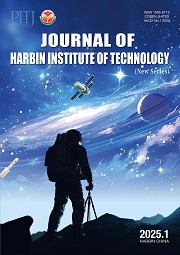| Related citation: | Suha K. Shihab,Ahmed AAG Alrubaiy,Ayad Naseef Jasim,Jabbar Gattmah.Optimization of Ti-5Al-2.5Sn Chemical Milling Process Parameters Using Taguchi Design for Enhanced Performance[J].Journal of Harbin Institute Of Technology(New Series),2024,31(6):60-70.DOI:10.11916/j.issn.1005-9113.2023134. |
|
| Author Name | Affiliation | | Suha K. Shihab | Department of Materials Engineering, Engineering of College, University of Diyala, Baqubah 32001,Diyala,Iraq | | Ahmed AAG Alrubaiy | Department of Materials Engineering, Engineering of College, University of Diyala, Baqubah 32001,Diyala,Iraq | | Ayad Naseef Jasim | Department of Materials Engineering, Engineering of College, University of Diyala, Baqubah 32001,Diyala,Iraq | | Jabbar Gattmah | Department of Materials Engineering, Engineering of College, University of Diyala, Baqubah 32001,Diyala,Iraq |
|
| Abstract: |
| One of the nontraditional manufacturing processes is the chemical machining that deals with the removal of material substances using acidic or alkaline chemical solutions. This study aimed to determine the maximum material removal rate (MRR), and minimum surface roughness (SRa) of Ti-5Al-2.5Sn alloy during chemical milling that is possible to achieve by varying the etching chemical milling parameters in terms of time, concentration of the chemical solution \[hydrofluoric acid (HF) and nitric acid (HNO3)\], and chemical milling temperature. The Taguchi method based on a statistical design of experiments (DOE) technique with an L16 orthogonal array is efficiently used to obtain the objective of this study and to detect optimal chemical milling parameters for the Ti-5Al-2.5Sn alloy. The experimental results were analyzed using ANOVA analysis to determine the importance of each system parameter on the response variables (MRR and SRa). The optimal process parameters were found to be at a chemical solution concentration of 22.5% HF and 17% HNO3, a temperature of 45 ℃, and a time of 60 min. These parameters resulted in a maximum MRR of 0.0842 mg/min and a minimum SRa of 0.30 μm. The ANOVA result signalized that the concentration of the etching acids has the most impact on both responses with contribution percentages of 81% and 67% respectively. This takes a look at the efficacy of the Taguchi technique in optimizing chemical milling procedures and offers precious insights for selecting process parameters to attain favored results. |
| Key words: Ti-5Al-2.5Sn alloy material removal rate chemical milling Taguchi design surface roughness |
| DOI:10.11916/j.issn.1005-9113.2023134 |
| Clc Number:TG71 |
| Fund: |






